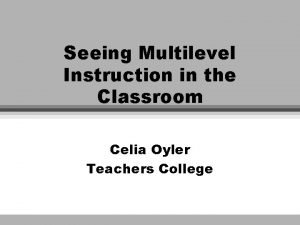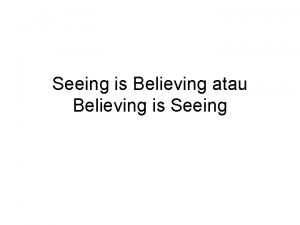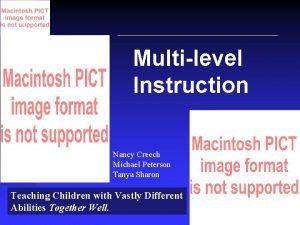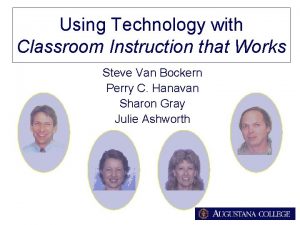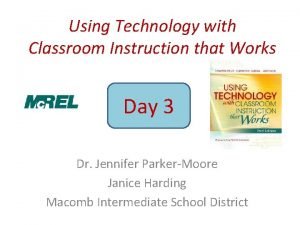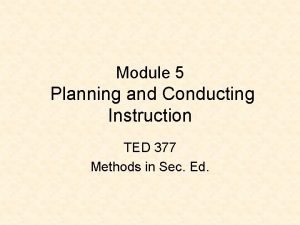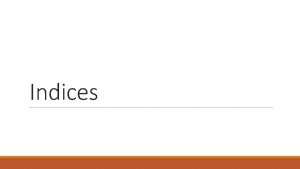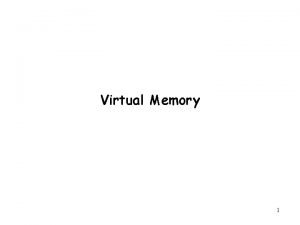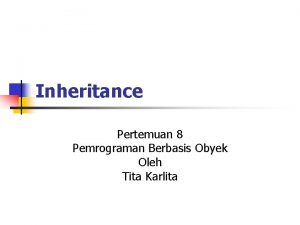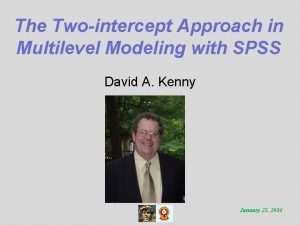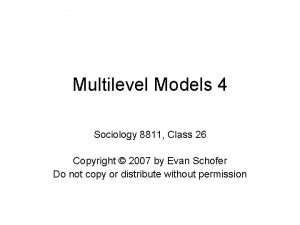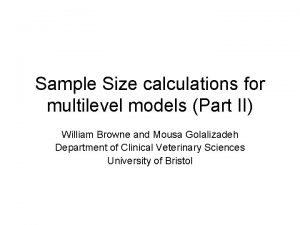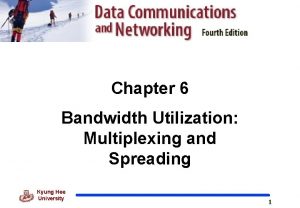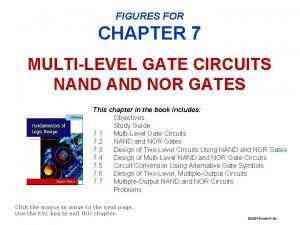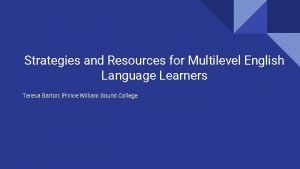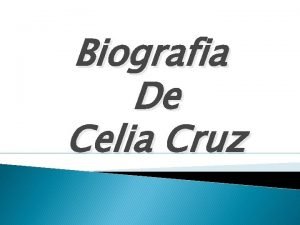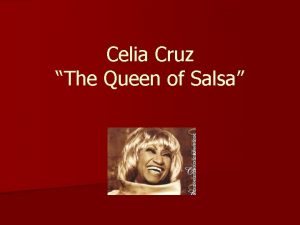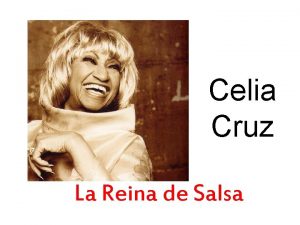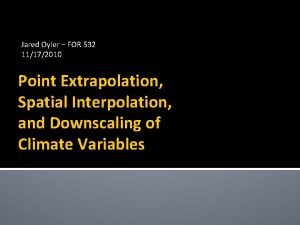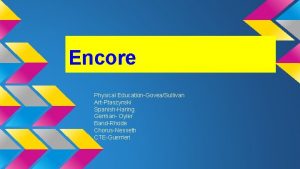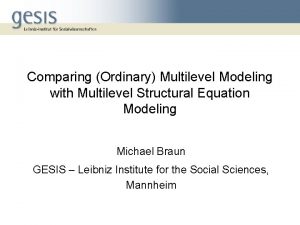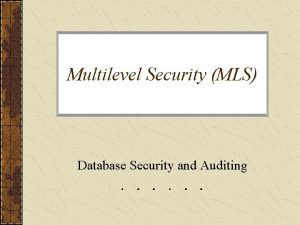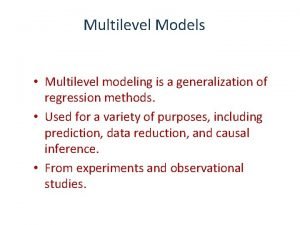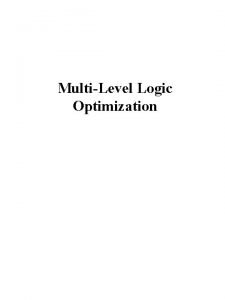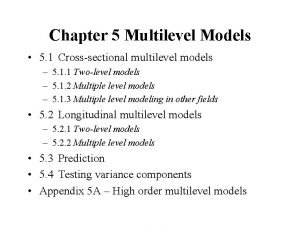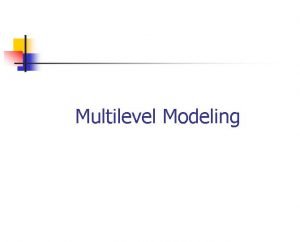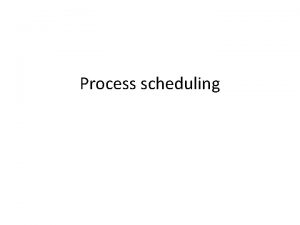Seeing Multilevel Instruction in the Classroom Celia Oyler

















- Slides: 17

Seeing Multilevel Instruction in the Classroom Celia Oyler Teachers College

Theories for Multilevel Instruction l l l Multilevel curriculum selection Curriculum overlapping Differentiating instruction Culturally relevant pedagogy Multiple intelligences theory

Classroom Marker # 1 There are participation structures outside the IRE • Teacher Initiates Responds • Teacher Evaluates • Student

Classroom Marker # 2 Students are doing: • different things at the same time or • the same thing at the same time, but are meeting different goals

Classroom Marker # 3 Skills instruction is targeted, not scatter-shot • customized skill groups within the same content area • assessment is on-going • grouping membership shifts in relation to assessment

Classroom Marker # 4 Students have visible ownership and investment in classroom processes. They: • have choices • make decisions • expand the task • extend the task • demonstrate deliberateness

Classroom Marker # 5 Classroom content connects with students’ lives. Students: • bring in outside resources • see themselves reflected in the pictures, in the stories, and in the problems

Classroom Marker # 6 Students interact directly with each other. They: • talk to each other without going through the teacher • give each other ideas about the content • give each other feedback about the process

Classroom Marker # 7 There are multiple ways to gain knowledge • written materials are at a variety of levels • there are materials with visual cues related to the content • there are opportunities to move and perform

Classroom Marker # 8 There are multiple ways to demonstrate and express knowledge • Visual • Performative • Linguistic • Musical

Classroom Marker # 9 Students bring in their prior knowledge and direct experience when teachers: • first elicit what students’ prior knowledge is • build a collective classroom knowledge base using these varied prior experiences

Classroom Marker # 10 Students are working on real-life tasks • students are learning genres that are used in the real world • teachers ask authentic questions, not pseudo-questions • students are learning content that relates to and deals with real-life issues

Classroom Marker # 11 Students are in flexible groups • interest groups • friendship groups • random groups • readiness groups • learning profile groups • partners

Classroom Marker # 12 Membership in these flexible groups changes regularly. Membership changes in relation to: • task • content • group process

Classroom Marker # 13 There is much interaction between the classroom and the community • people from the community share their knowledge, talents, questions, and skills with students in the classroom • students journey into the community to investigate

Classroom Marker # 14 Students are asking lots of questions and investigating the answers • lessons start with students’ questions • students’ work displays their collective answers to their questions

Classroom Marker # 15 Students play a major role in documenting their learning. Students: • keep track of materials • keep track of their progress on tasks • evaluate their own work • set goals for themselves which they share publicly
 Celia oyler
Celia oyler Seeing is believing atau believing is seeing
Seeing is believing atau believing is seeing Multilevel instruction
Multilevel instruction Differentiated instruction vs individualized instruction
Differentiated instruction vs individualized instruction Direct instruction strategies
Direct instruction strategies Using technology with classroom instruction that works
Using technology with classroom instruction that works Tools for classroom instruction that works
Tools for classroom instruction that works Planning and conducting instruction in the classroom
Planning and conducting instruction in the classroom Cse smart class
Cse smart class What is an indices
What is an indices Multilevel page table
Multilevel page table Contoh multilevel inheritance
Contoh multilevel inheritance Multilevel modeling in spss
Multilevel modeling in spss Multilevel model equation example
Multilevel model equation example Sample size calculations in multilevel modelling
Sample size calculations in multilevel modelling Bandwidth utilization multiplexing and spreading
Bandwidth utilization multiplexing and spreading Multilevel nand gate
Multilevel nand gate Teaching multilevel esl classes
Teaching multilevel esl classes
